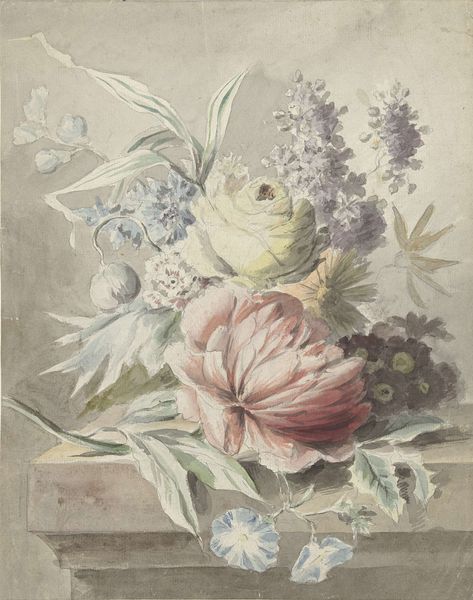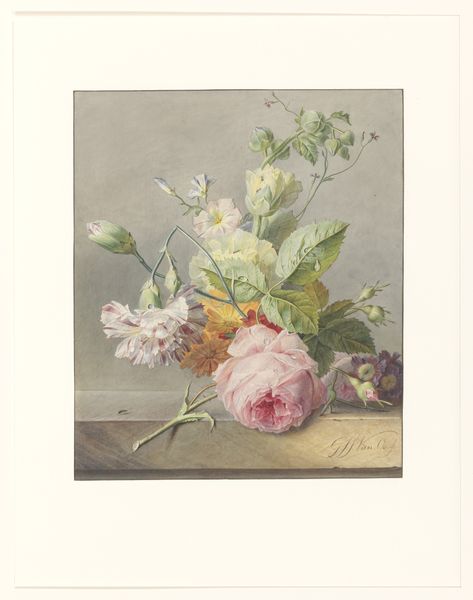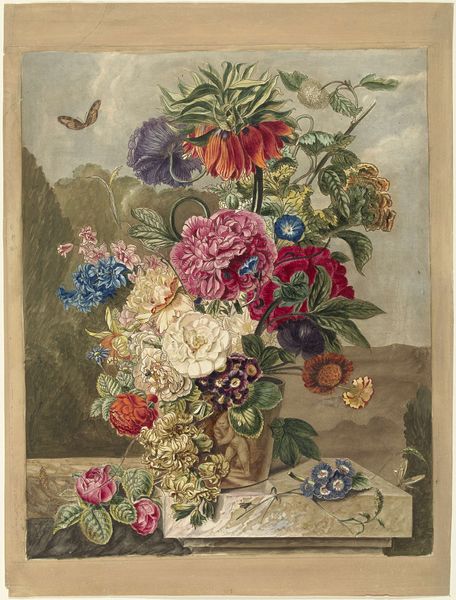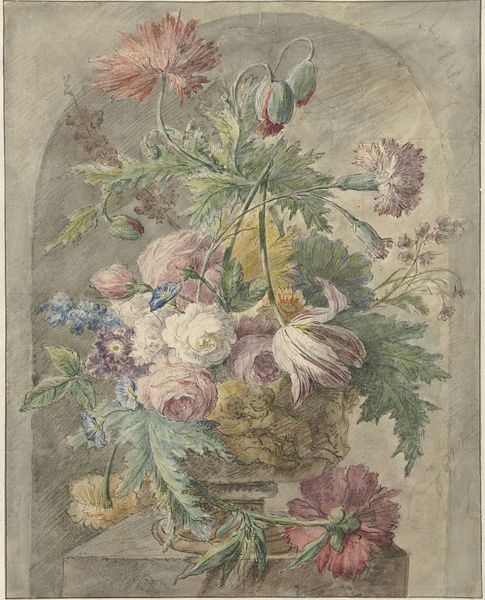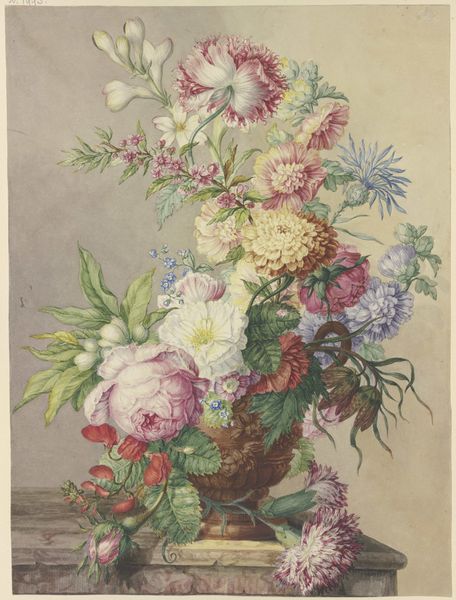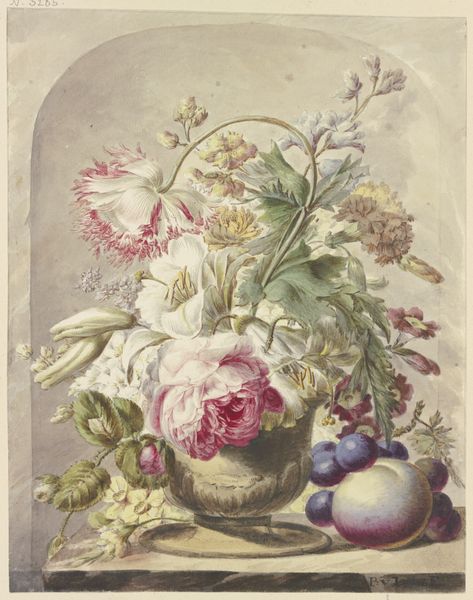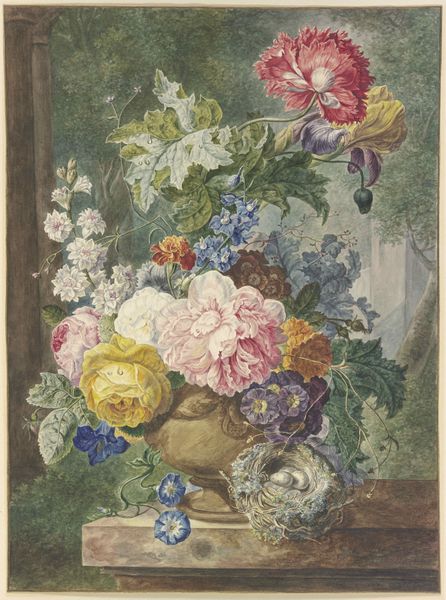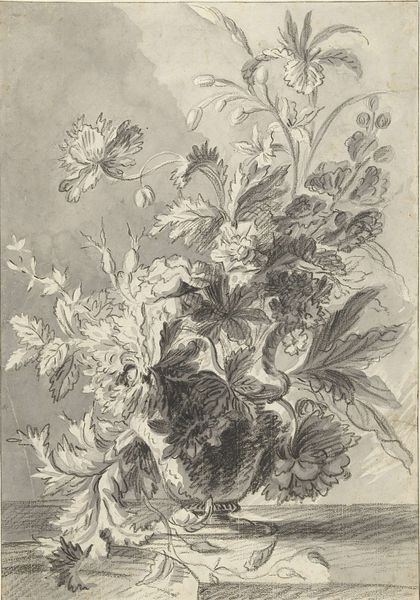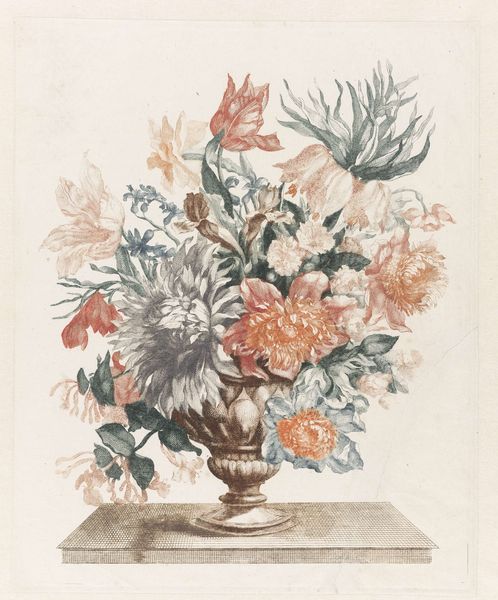
painting, oil-paint
#
still-life
#
painting
#
oil-paint
#
flower
#
oil painting
#
plant
#
genre-painting
#
academic-art
#
realism
Copyright: Public domain
Thomas Hill created this still life with roses and wine glasses, its precise date unknown. The eye is immediately drawn to the abundant arrangement of flowers and fruits, rendered with a lush, almost tactile quality. Light plays across the surfaces, animating the scene with soft highlights. The composition functions on several structural levels. The foreground is dominated by darker, earthier tones of the cut pumpkin and shadowed objects, while the background opens into a lighter, airy space with grapes and a suggestive landscape. This contrast invites a semiotic interpretation; the foreground representing material pleasures, the background alluding to transcendence. The structure destabilizes the traditional still life by incorporating elements of landscape, blurring boundaries and suggesting the transient nature of beauty and abundance. Consider how Hill uses the interplay between the natural and artificial—the wildness of the roses against the refined wine glasses. This tension reflects a broader cultural discourse of taming nature, categorizing the world, and our ongoing negotiations with these imposed orders.
Comments
No comments
Be the first to comment and join the conversation on the ultimate creative platform.
